Australia and New Zealand and becoming republics
The issue of a model for a republic
From the web page at http://www.republic.org.nz/republicmodels
, as viewed on 04 November 2008 (note – I believe that the current
NZ Model of government, as described below, is fairly similar, if not
the same as the Australian Model);
“
Models of a republic
This page compares the different republican models of
governments around the world to New Zealand's current
constitutional status quo. None of these examples are meant as
definitive models of what a New Zealand republic might look like -
every republic is different and created by its citizens out of its
circumstances - but the models presented here are a guide to the
model a New Zealand republic could follow.
The different types of republics
There are basically three different types of republics. We've
listed these below and provided some examples:
Presidential systems
- are based on a strong executive President, who is indepedent of
the legislative branch (Parliament or Congress) and judicial branch
(the courts). Examples include the United States, Mexico, Brazil,
Argentina, Chile and parts of Africa.
Semi-Presidential systems
- have a weaker President who often shares executive power with the
legislative branch, who often appoint their own head of government.
Examples include France, Russia, Kenya, Taiwan, Pakistan and Haiti.
Parliamentary republics - have a head of
State who is mainly ceremonial, with few executive powers (usually
designed simply to keep the government in check). Examples include
Austria, Italy, Ireland, Iceland, Portugal, Finland and Germany.
The models
New Zealand
(Constitutional monarchy)
Ireland
(Parliamentary republic with a directly elected head of state)
Germany
(Parliamentary republic with an indirectly elected head of state)
South
Africa (Parliamentary republic with a combined head of state and
head of government)
Switzerland
(Parliamentary republic with no single head of state)
France
(Semi-presidential republic with an executive head of state and head
of government)
United States of America
(Presidential federal republic with a directly elected head of state
combined with the head of government)
First, we'll look at New Zealand's constitution:
|
New Zealand
|
|
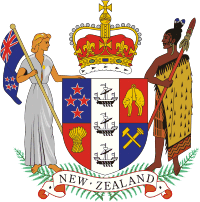
|
Head of state
|
Head of government
|
|
Sovereign
|
Governor-General
|
Prime Minister
|
|
Qualifications:
|
Not a Catholic or married to one, males come
before females
|
None - convention is for a New Zealand resident
|
A member of parliament, appointed by
Governor-General on the confidence of Parliament.
|
|
Elected by:
|
No-one: hereditary
|
No-one, appointed by the Sovereign on the binding
advice of the Prime Minister
|
None, leader of the largest party in Parliament
|
|
Removed by:
|
Can only be removed by own abdication
|
The Sovereign, on the binding advice of the Prime
Minister
|
Party caucus vote, removal from Parliament (due to
prosecution)
|
|
Term:
|
Life
|
None defined; usually five years
|
None, but must win elections
|
|
Write legislation?
|
No
|
Yes - Member of Parliament
|
|
Veto legislation?
|
No (see note)
|
No
|
|
Appoint judges?
|
Yes - on the advice of the Prime Minister
|
Yes, by advising Governor-General
|
This is how New Zealand's constitution under a constitutional
monarchy looks at the moment. As you can see, the "head of
state" is divided between the Sovereign (the Queen) and the
Governor-General, the Queen's representative. While the Queen is
legally New Zealand's head of state, de facto the Governor-General
does the job, cutting ribbons, making speeches and signing Bills into
law. Some constitutional academics think this means New Zealand is a
de facto republic anyway, because we have a virtual head of state in
the Governor-General. Since 1967 all Governors-General have been New
Zealanders, appointed on the advice of New Zealand's Prime Minister.
Top of page
|
Republic of Ireland
|
|
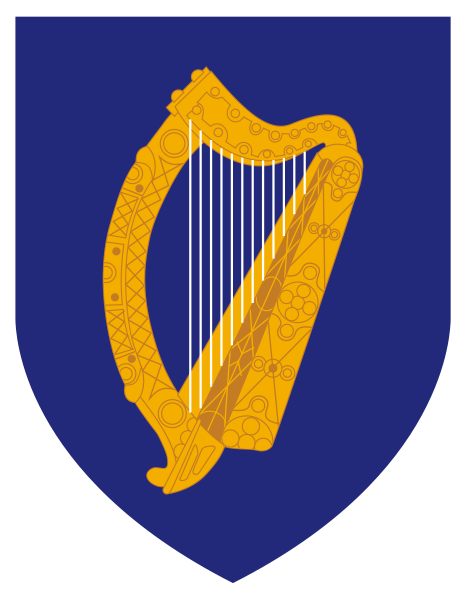
|
Head of state
|
Head of government
|
|
President
|
Prime Minister
|
|
Qualifications:
|
All citizens of Ireland over the age of 35
|
A member of parliament
|
|
Elected by:
|
The people of Ireland, by a direct vote using STV.
|
None, leader of the largest party in Parliament
|
|
Term:
|
A maximum two terms of seven years
|
Not defined
|
|
Write legislation?
|
No
|
Yes - Member of Parliament
|
|
Veto legislation?
|
No - but can refer Bills to referendum or Supreme
Court
|
No
|
|
Appoint judges?
|
No
|
No
|
The Republic of Ireland is a parliamentary republic, with a
directly elected ceremonial President. While the President of the
republic dates back to 1936, Ireland was actually a dominion like New
Zealand until 1949, in between Ireland (then known as the Irish Free
State) had both a King and a President. Since 1949 Ireland has only
had a President, who is mainly ceremonial, but as you can see does
have more powers than our Governor-General.
The Irish model is similar to the second republican option in
Keith Locke's Head of state (Referenda) Bill.
Top of page
|
Federal Republic of Germany
|
|
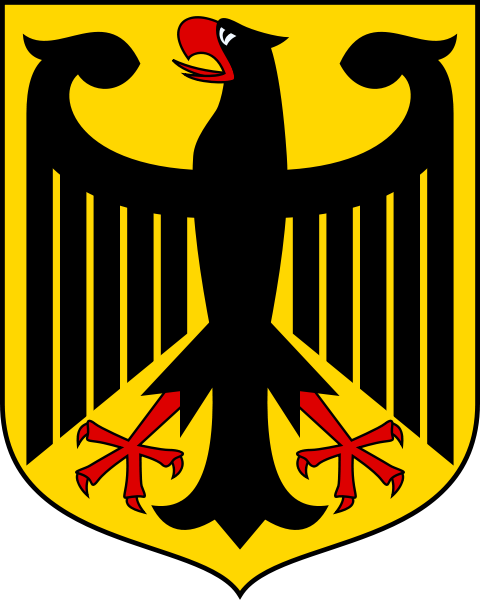
|
Head of state
|
Head of government
|
|
Bundesprasident (Federal President)
|
Chancellor
|
|
Qualifications:
|
Must be a German citizen over 40 years of age
|
A member of parliament
|
|
Elected by:
|
Federal convention of delegates from federal and
state parliaments, by a absolute majority
|
None, leader of the governing coalition in German
Parliament
|
|
Removed by:
|
Impeachment, majority of Federal German parliament
|
Loss of election
|
|
Term:
|
No more than two terms of five years
|
None defined
|
|
Write legislation?
|
No
|
Yes - Member of Parliament
|
|
Veto legislation?
|
Yes or refer to Supreme Court
|
No
|
|
Appoint judges?
|
No
|
Yes - approved by Parliament
|
Germany's post-war constitution was designed to prevent the rise
of another dictatorship, which occured under the previous Weimar
republic, which was a semi-presidential system. Under that
constitution, the President held more powers than the current German
President does. Today, German Presidents use their powers sparingly,
mainly to resolve legislative issues. The German Parliament now has
more power to appoint and remove the Chancellor.
The German model is similar to the first republican option in
Keith Locke's Head of state (Referenda) Bill.
Top of page
|
Republic of South Africa
|
|
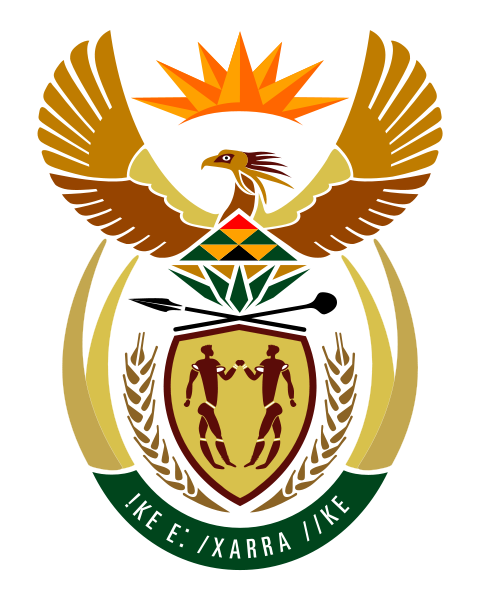
|
Head of state
|
Head of government
|
|
President
|
|
Qualifications:
|
Member of Parliament
|
|
Elected by:
|
Parliament
|
|
Removed by:
|
Impeachment - majority of Parliament
|
|
Term:
|
No more than two Parliamentary terms (maximum ten
years)
|
|
Write legislation?
|
Yes - Member of Parliament
|
|
Veto legislation?
|
No - But Constitutional Court may do so
|
|
Appoint judges?
|
No - Parliament does so
|
South Africa's post-apartheid constitution of 1996 blends the
Westminster Parliamentary system with the Washington Presidential
model. The President of South Africa is basically like our Prime
Minister - they're a member of South Africa's parliament - but is the
head of state as well as head of government, like the President of
the United States. The South African Constitutional Court has many
over-arching powers to restrain the President.
Some argue that this is a "cleaner" way of setting out
the powers of the head of state, while also having the added
accountability. Since South Africa's political system has been
dominated by the ANC since 1994, it remains to be seen how the South
African constitution would work with regular changes of power.
Top of page
|
Swiss Confederation
|
|

|
Head of state
|
Head of government
|
|
None - There is neither a prime minister nor a president of
Switzerland - the President of the Swiss Confederation is merely
"primus inter pares" (first among equals) in the Swiss
Federal Council.
|
|
Qualifications:
|
Not applicable
|
|
Elected by:
|
Members of the Swiss Assembly
|
|
Removed by:
|
Loss of election
|
|
Term:
|
None defined
|
|
Write legislation?
|
Yes - can also be passed by referendum
|
|
Veto legislation?
|
No
|
|
Appoint judges?
|
No
|
Switzerland is one of those funny states that isn't formally a
parliamentary, presidential or semi-presidential republic.
The current Swiss Confederation was created in 1802 as a
confederation of various multi-ethnic cantons, which all have their
own charactaristics. For this reason the federal state is very weak,
and only deals with issues such as foreign affairs and defence. There
is no formal head of state or head of government, instead there is a
council of ministers with a president. The presidency rotates yearly
between members of the council.
Top of page
|
Fifth French Republic
|
|
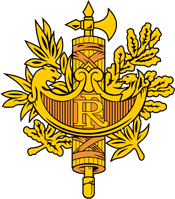
|
Head of state
|
Head of government
|
|
President
|
Prime Minister
|
|
Qualifications:
|
Must be a French citizen of 50 years of age.
|
A member of parliament
|
|
Elected by:
|
Directly by second-round system of voting
|
None, leader of the largest party in Parliament. Appointed by
President.
|
|
Removed by:
|
Impeachment by Parliament
|
Parliament only, not the President
|
|
Term:
|
Five years, no limit on terms
|
None defined
|
|
Write legislation?
|
Yes, but must be passed by national assembly
|
Yes
|
|
Veto legislation?
|
No, but may refer laws back to Parliament, or send to
referendum or "constitutional council"
|
No
|
|
Appoint judges?
|
Yes, with the assent of cabinet.
|
No
|
France currently sits between a Parliamentary and a Presidential
republic, with what is known as a "Semi-presidential"
system.
The French President is more powerful than the German and Irish
Presidents, but less powerful than the President of the United
States. The President has the power to appoint the Prime Minister of
France, but this person must be the leader of the party with the most
seats in parliament.
Sometimes the President and Prime Minister may be from different
political partys. This creates "co-habitation" between
Presidents and Prime Ministers, and usually leads to the President
being in the weaker situation. Critics of semi-presidential systems
argue this causes instability and conflict. Often it leads the
President to focus on one policy area, and the Prime Minister on
another - for example, the President of France often looks after
foreign policy and trade, while the Prime Minister looks after
domestic issues.
Top of page
|
United States of America
|
|

|
Head of state
|
Head of government
|
|
President
|
|
Qualifications:
|
No less than 35 years of age, natural born citizen
of the United States and a resident of the United States for at
least 14 years.
|
|
Elected by:
|
A majority of votes in the electoral college,
determined by state-by-state votes.
|
|
Removed by:
|
Impeachment by two-thirds of Congress following
trial and conviction, or resignation.
|
|
Term:
|
No greater than two terms of four years
|
|
Write legislation?
|
Yes, but must be passed by Congress
|
|
Veto legislation?
|
Yes, but can also be overturned by the Supreme
Court
|
|
Appoint judges?
|
No, recommended to and approved by Congress
|
The United States' is the oldest, most stable and best example of
a federal, constitutional republic with a presidential system. This
means the United States is made up of states with their own
Governors, and a Federal government headed by a President, who has
wide executive powers.
Supporters of this model point to its clear division of powers
between the President, Supreme Court and Congress, and the
over-arching supremacy of the Constitution of the United States.
Critics point to the excess of the executive (the elected presidency)
and the often undemocratic way in which the presidency is elected,
due to the federal nature of the system. For example, it is possible
for a President to be elected without having a majority of the
popular votes, but a majority of votes in the electoral college - as
was the case in the 2000 presidential election.
Resources
"
The material above is copied and published here, with the
permission of the NZ Republican Movement. The material is as
published on the web page at
http://www.republic.org.nz/republicmodels
, as viewed on 04 November 2008.
For some more information about how a republic relates to what we
have now, see the document at
http://www.republic.org.nz/documents/Factsheet_the_facts.pdf
.
Whilst the document is from the NZ Republican Movement, I believe
that the information in the document, relating to conversion to a
republic, is quite similar in effect for both Australia and New
Zealand.
But, which model is most appropriate?
I believe that, for both Australia and New Zealand, from the above
information, that the South African Model is the most appropriate.
In both countries, apart from actually signing the legislation
that is passed by the respective parliaments, the prime minister of
each of the two countries, I believe, fulfils most of the roles of
the President, as defined in the South African Model.
And I believe that the Head Of State for a country, should be
elected by the parliament of the country, to ensure compatibility
with the parliament, and, to reduce inefficiency and obstruction that
can and has been created, when a Head Of State is incompatible with
the government, such as in the case of when a USA President conflicts
with the congress, or, similarly, when a mayor of a local government,
being directly elected by the constituents, conflicts with the local
government.
That also deals with the issue of whether a Head Of State should
be allowed to veto legislation passed by the parliament. The
Parliament is supposed to be elected by the people, and therefore,
the legislation passed by the Parliament, is supposed to reflect the
will of the people. Therefore, it is not proper for a Head Of State,
to be empowered to veto legislation that is properly passed by the
Parliament; only a constitutional court, which can determine whether
the Parliament is constitutionally authorised to pass the
legislation, should have the power to veto legislation passed by a
Parliament, and such power should only be applied, where legislation
passed by a Parliament, is in conflict with the Constitution; where
the parliament does not have constitutional authority to pass the
legislation.
Also, having a Head Of State that is elected by the parliament,
instead of directly by all of the electors of a country, is likely to
reduce wastage, and reduce the prospect of a person buying their way
to power, as happens in the USA presidential elections, which
basically lead to much ill-will, as people tend to be well and truly
fed up with it all, by the end of the exorbitant USA presidential
campaigns, that waste thousands of millions of dollars, on
unproductive pursuits, such as buying a person's way into power.
Should Australia and New Zealand become republics?
In the Australian Democrats document published at
http://www.democrats.org.au/docs/2007/AD_RepublicPolicyElection_07.pdf
, which, amongst other things, states
“November 2009 is 10 years since the 1999 republic
referendum, and the Democrats want a simple question put to the
Australian people in a plebiscite: Do you want Australia to become a
republic?
YES or NO
The vote will be non-binding, and conditional upon the public
being consulted about different forms of republic models before a
referendum occurs. The Democrats are not wedded to any model - the
public should decide this too. “
and
“The
1999 republic referendum:
Monarchists have argued that the failure of the 1999 referendum
represented a definitive rejection of republicanism.
The truth is the referendum rejected a model. It was not a
rejection of republicanism itself. The referendum put only one model
for a republic to the people: a model that allowed an Australian Head
of State to be hand picked by the Prime Minister and approved by a
2/3 majority of Parliament.
The ‘no’ campaign in 1999 was in fact led by a split
republican lobby who urged Australians to say no to a President
elected by politicians. It worked, and the monarchists led by the PM
couldn’t believe their luck.
The Road to a Republic
In 2004, the Democrats initiated a Senate
Committee inquiry co‐sponsored by the ALP, the Road to a Republic,
which investigated the steps and processes towards Australia becoming
a republic.
The Committee recommended a four step process to move towards an
Australian as our Head of State:
1. An initial plebiscite to enable Australians to vote “yes”
for a republic on the condition that a future plebiscite would be
held, where the type of republic would be decided by a majority of
Australians;
2. A second plebiscite where up to five republic models are put to
a preferential vote, including models for direct election and Prime
Ministerial appointment;
3. A ‘drafting convention’ where constitutional experts are
brought together by Parliament to draft the legislative form of the
republic model based on the people’s choice; and
4. Finally, a binding referendum to put the constitutional model
to the public.
The Democrats have had legislation on the Senate notice paper
since 2001 to achieve the first step, and we are committed to
pursuing the Committee’s recommendations after the election.
What do the polls say?
Polling conducted in 2007 suggests that 45%
of people are totally in favour of a republic compared to just 36%
who are opposed, with some 19% undecided. Those in favour climb to
62% if Prince Charles takes the throne (Newspoll, 21 January2007).”
So,
the simple answer to the question “Should Australia and New Zealand
become republics?”, is, the people should be asked, in a
referendum, for each country. Not “Should this country adopt this
particular model, or stay as we are?”, but, Should this country
become a republic?”. The difference is simple, and, is significant.
Australia
had not knocked back becoming a republic, because the question of
whether Australia should become a republic, has not been put to the
voters.
Should Australia and New Zealand stay as members of the British
Commonwealth?
That is another question that should be put to the voters, in a
referendum.
I personally believe that the concept of the British Commonwealth
is out of date, and that both countries should show that they are now
too old for nappies, and are mature enough to stand on their own
feet, as independent countries, without having to depend on Mother
England, but, it is not a decision for just me. It is a question that
should be put to the voters of each to the two countries.
If Australia and New Zealand become republics, that does not mean
that they will not still be members of the British Commonwealth.
The voters of both countries should make an additional decision,
as to whether they want their respective country/countries, to
continue to be members of the British Commonwealth.
So, I believe that the voters of both countries, should be asked,
by way of referenda in both countries, whether, (1) their respective
country should become a republic, and, (2) whether their respective
country should continue to be a member of the British Commonwealth.
I can be contacted by email by
clicking on my name at the end of this sentence - Bret
This web page was
last updated on 04 November 2008
![]()